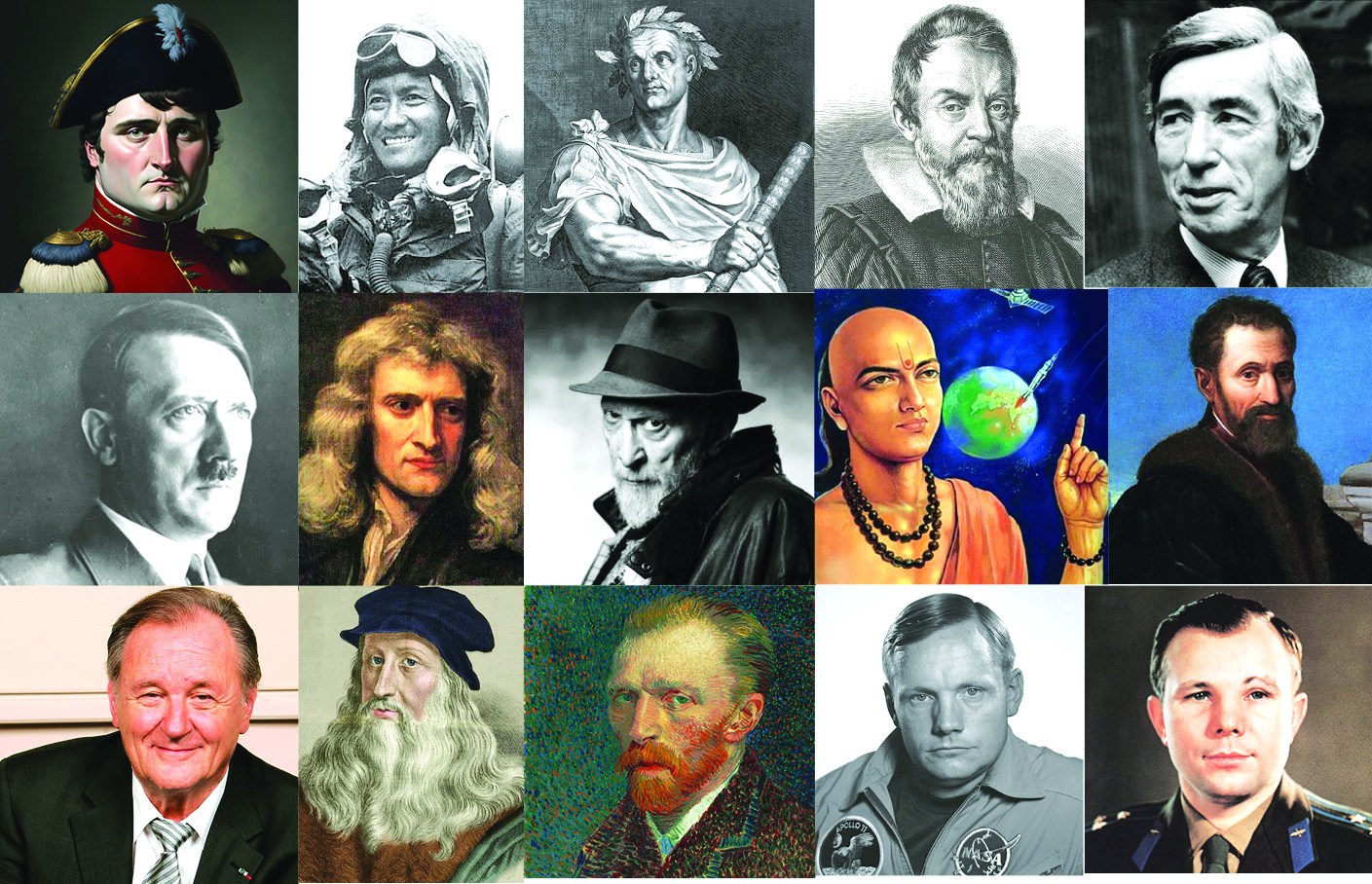Talking Shop: Stoikiy Muzhik
These innocuous Russian words mean ‘Standing Man’, depicting resilience and strength. But most men oft-choose their own pose, much to their own undoing

“Drinking good wine
with good food in good
company is one of life’s
most civilized pleasures.”
—Michael Broadbent
I am no philosopher or oenephile, certainly not a connoisseur, and I agree with Broadbent’s wisdom. But I also know that the corollary holds true too. Partaking of things vile, in the wrong place and in the wrong company, can be as miserable as can be its far-reaching ramifications; repercussions that can change the very course of history. Our generation should know, reduced as we have been to thumb-twiddling witnesses to partaking and indulgences. There are oodles of these ‘items’ around us—people who say something, yet mean something very different; a creed for whom might is right and strength and resilience don’t matter, for that’s balderdash.
Philosophical vein aside, mankind has moved beyond ‘Stoikiy Muzhik’. The Russian phrase means ‘Standing Man’, depicting resilience and metier. Most men, though, choose their own pose, leanings and beliefs, often leading to their own undoing. Gone are the days when fortitude and hardiness were attributes that created legacies. A pregnant silence rules the world today, shattering conviction and fanning an odious air of distrust and uncertainty.
And therein stems the intent of this story. The Standing Man. Upstanding Man. Standout Man. Standing Tall. For gone are this kind, replaced by Stand-less Man and Stand-down Man. This column is about average people viewed as ordinary, yet exhibiting extraordinary ability and resilience in the face of adversity. I thus created a list of people who have brought about change in human history. Call them what you will, but they are a variegated mix of the good, the bad and the ugly, the only common denominator between these 25 is that, regardless of fame or notoriety, they wrote their names in the annals of history.
REAL ESTATE GOBBLERS: History tells us that political figures have routinely surfaced as world rulers and conquerors, with Hitler being seen as the foremost. Many have researched Hitler (who heads the list) and studied both his origin and legitimacy. Some argue whether he should ever have been used as a historical analogy, for under his stewardship prospered villains who spawned a generation of tyrants and revolutionaries. By the end of World War II, Hitler lay dead in a bunker, identified as Western civilization’s new archetype of evil and turned into a hegemonic parallel.
Others in this list of who made plunder and swag a pastime are Julius Caesar, a skilled politician and military commander who took on the mighty Gauls, amongst others; Napoleon Bonaparte, ambitious French emperor and military genius who reshaped Europe’s political landscape through conquests; Benito Mussolini, French dictator whose policy was based on the fascist doctrine of ‘spazio vitale’ (‘living space’), aimed at expanding Italian possessions and sphere of influence; and Vladimir Ilyich Lenin, the Soviet leader who was one of the most influential figures of the 20th century.
FRUIT & WATER WATCHERS: Leading the world’s most famous scientific discoveries are those that changed human life, such as the lightbulb, the smallpox vaccine, the structure of DNA, pasteurization to make food safe, and the Laws of Motion. Today’s listing is not a ranking, but a roster that draws our attention to those who made a difference and shaped humankind. In this category, of course, it was all for the good—as was Nicolaus Copernicus, the Polish astronomer who proposed that the planets have the Sun as the fixed point and that the Earth is but a planet that (also) orbits the Sun.
We then come to Galileo Galilei, who studied speed and velocity, gravity and free fall, the principle of relativity, inertia, projectile motion and worked in applied science (the next time you drive your car, remember him); Sir Isaac Newton, who turned the humble apple into an object of mystique and discovered gravity and wrote the Laws of Motion; Archimedes of Syracuse, who used mathematics to invent tools such as the Archimedes screw and ran naked shouting ‘Eureka’ when he unearthed his principle on the buoyancy of objects immersed in liquids; and Aryabhata, the first in the line of major mathematician-astronomers whose works include the Āryabhaṭīya and the Arya-siddhanta.
SUMMIT & LAND HOGGERS: This is a listing of those who discovered or reached never-before places on the Planet and Universe. It is an easy category to write on, since it just has to begin with Neil Armstrong and Buzz Aldrin, the first man and first astronaut pilot on the moon (we can never forget “One small step for man, a giant leap for mankind…”).
The roster moves on to Soviet pilot and cosmonaut Yuri Alekseyevich Gagarin, who made man’s first crewed spaceflight on the Vostok 1, becoming the first to journey into outer space; mountaineers Edmund Hilary and Tenzing Norgay, who were the first confirmed to have reached the summit of Mount Everest on 29 May 1953; Italian explorer Christopher Columbus, who completed four voyages across the Atlantic, paving the way for the European colonization of the Americas; and Vasco da Gama, a Portuguese explorer known for being the first to set sail from Lisbon to India.
PAINT AND STONE DABBLERS: A Google search of auction prices at Sothebys or Christie’s provides an indication of the most valuable artworks or genres, but the finest paintings by the world’s best artists now hang in museums or public galleries and are not for sale at any price. The Mona Lisa, for one, a bravura portrait by High Renaissance genius Leonardo Da Vinci, is part of the permanent collection at Paris’ Louvre museum and is valued at over $1 billion, though it will never come to auction. What the smiling lady(?) does, though, is propel Da Vinci to the top in this category.
Others in the list are Michelangelo, also called a ‘Quadruple Threat’ in Europe as he was a painter (the Sistine Chapel), a sculptor (the David and Pietà), an architect (St. Peter’s Basilica in Rome) and a poet; Rembrandt, a Dutchman responsible for works such as ‘The Night Watch’, but most known for his ability to evoke the innermost thoughts of his subjects; Claude Monet, best-known artist among the Impressionists who captured the changeable effects of light on the landscape; and Vincent van Gogh, seen as mentally unstable after cutting off his own ear, but who also created masterpieces such as ‘The Starry Night’, which went on to inspire a Top 40 hit by Don McClean in modern times.
COMIC-CREATORS & SUPERHEROES: A handful of comic books and graphic novels stand out above all others, celebrating a medium that has been growing rapidly since the early 20th century. Gradually evolving mainstream culture and artistic approaches changed how comics and their characters are written, with each decade seeing some fantastic stories being published. Any comics listing is always headed by ‘Sin City’, Frank Miller’s acclaimed neo-noir comic that showcases his talent beyond superheroes, combining pulp and crime-noir influences into a serialized format.
Others in the list (using illustrations and global readership as a critical determinant) are Tintin, a series of 24 comic books created by Belgian cartoonist Georges Remi, who wrote under the name Hergé, which remains one of the most popular European comics in recorded history; Asterix, stories created by René Goscinny and illustrated by Albert Uderzo about a village of indomitable Gaulish warriors who fought the Roman Republic with the aid of a magic potion during the era of Julius Caesar; Archies, an American publication about a group of youngsters and their growing-up years, perhaps the longest-running comic book series of all time; and Marvel Comics, which has given birth to a whole generation of superheroes such as Spiderman, X-men and The Fantastic Four.
At the end of the day
The list is not sanguine or pessimistic; just a desperate cry for help in these times. As mentioned, we are today surrounded by ‘items’, but many have the ability to be Stoikiy Muzhiks in their own right. Let’s gauge their state of mind and lend an ear. Let’s talk and express our fears and understand theirs’, so that together, we may comprehend the larger maimsters and evil-doers. Let’s remember that these times too shall pass… And that more of us shall someday be the ‘Standing Man’.
The writer is a veteran journalist and communications specialist. He can be reached on [email protected]. Views expressed are personal



